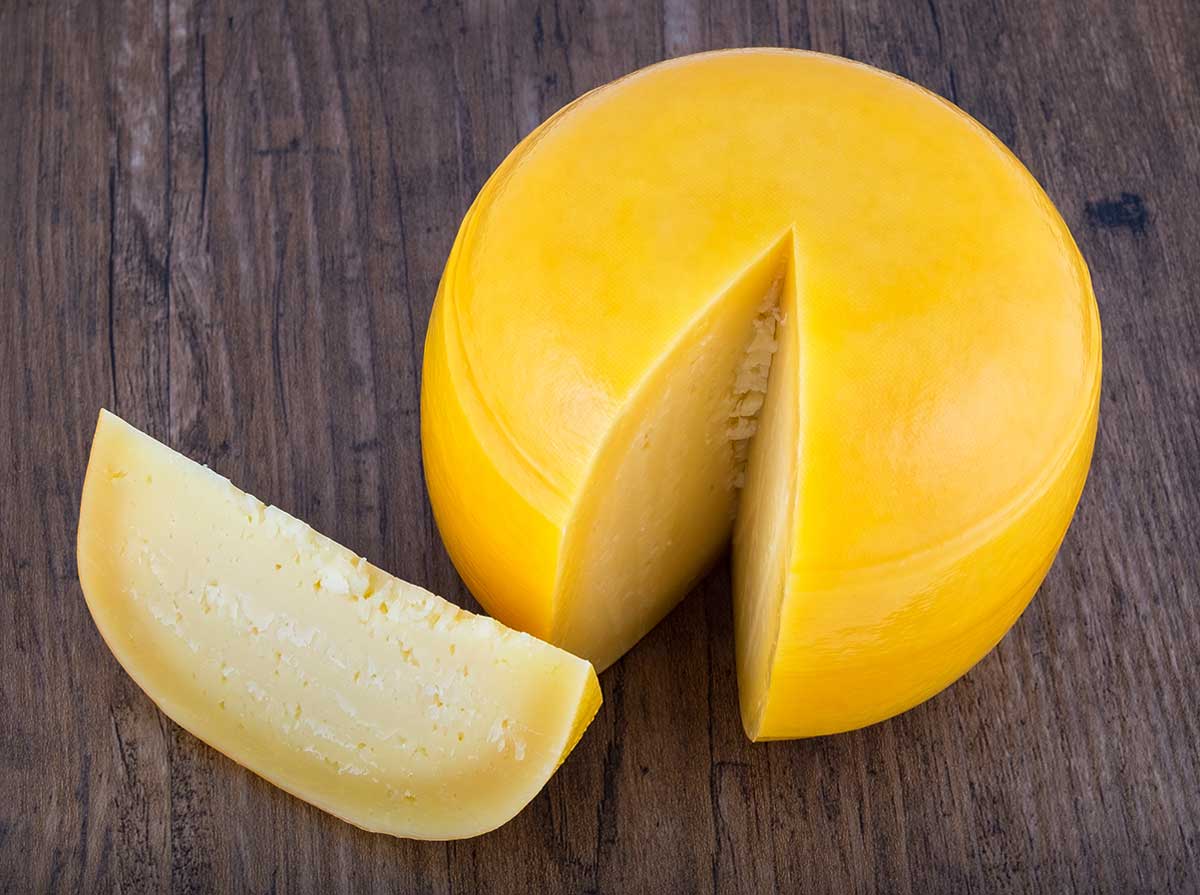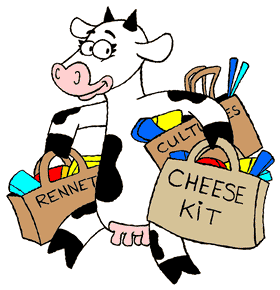
Gouda Cheese Making Recipe (Sweet)
The culture we use in this recipe adds a sweeter, more savory flavor that brings a whole new dimension to a traditional Gouda. Complete with a full history and detailed recipe, you'll be able to learn about and enjoy this fantastic cheese.
-
Yield
2 Pounds
-
Aging Time
~3 Months
-
Skill Level
Intermediate
-
Author
Jim Wallace

Gouda Cheese Making Recipe (Sweet) Info
Wax-Coated
Where Gouda Comes From
Variations
What Makes Gouda Sweet?
How to Make Gouda
Ingredients
Total price for selected items: Total price:
Black Friday Sale! Up to 20% Off Sitewide

Instructions
-

Acidify & Heat Milk
Begin with 6 gallons of whole full fat milk. This can either be pasteurized milk or raw milk. If using raw milk the milk must be of highest quality because The low acid of this cheese will not protect against late fermentation from unwanted bacteria during aging. In Holland a nitrate is added but not allowed here in the US.
Heat the milk to 86F. Once heated, add 1/2 tsp MM100 Culture and ripen for 30 minutes.
-

Coagulate with Rennet
Add 2 tsp (10 ml) single strength rennet. At 13 minutes the milk will begin to thicken but allow the curd to develop 40 min. from time of rennet addition or until a very firm curd develops.
-




Cut, Cook & Wash Curds
Check curd for firmness and then cut. Note: with full fat milk I make a precut of the curds cutting crosswise about 1 inch squares and allow the curds to firm for about 2-3 min. before I continue my final cutting to 1/2 - 3/8 inch pieces in 5 minutes. This will help avoid losing more fat as you cut the curds smaller.
Now slowly and gently stir the curds for 15 min.
Remove 1/3 of the whey, then add water at 130 F over 15 min. for a final temp of 98-102. (Higher temp for drier longer aging cheese). This is a very important step since it also removes some of the lactose or milk sugars which can be converted to acid by the lactic bacteria.
Continue stirring gently for 30 minutes, to keep the curds from matting, or until final moisture is reached according to the desired aging requirements (longer stirring = drier curds = longer aging).
-




Form the Curds
Mold filling is initially done under the whey to insure a tight curd mass with fewer mechanical holes.
Prepare molds and draining cloth and place into a pan large enough to retain whey.
Then pour free whey into the molds to warm them. Fill molds, allowing whey to rise 1-2” over top of curds.
Add the follower plus 6 lbs of weight on top (approx 1 lb. of weight per lb. of final cheese yield) then allow this to consolidate the curds for 15 min.
-


Pressing
Remove mold with curds from the whey and place in a cheese press with 9 lbs of weight for 30 min.
Remove the mold from the press and flip the cheese in the mold, rewrap and press at 16 lbs. for 30 min.
Repeate the process and press at 25 lbs. for 30 min.
Repeate once more and press at 25 lbs for 6-8 hrs. (For drier long aging cheese this can be increased to 50 lbs and pressed overnight).
Remove weight and cloth and allow the cheese to rest overnight in mold at 50F.
Note: I use a simple weight of a gallon of water to yield about 8+ lbs for the initial weight and a 25 block of granite for my final weight. This will yield enough pressure to consolidate the curds for the finished cheese
-

Salting
Next morning place the cheese in saturated brine for 18 - 24hrs (3-4 hrs per lb. of final yield).
Here is a simple brine formula:
1 gallon of water to which is added 2.25 lbs of salt, 1tbs. calcium chloride (30% solution), and 1 tsp. white vinegar.
Remove from brine, wax or prepare natural rinds when cheese is dry to touch (3-7 days).
Traditionally the Boerenkaas was a natural rind cheese. The barns were cleaned out in the spring when the cows went on pasture for the summer and the cheese was aged on shelves where the cows had been. The rinds were simply kept clean by brushing and turning on a regular basis.
-

Aging
For aging requirements targets are 56-64F ... 80-85% RH Some small internal holes may develop during aging. The higher the temperature during drying and aging, the greater chances for the eye development.
The cheese will be ripe in 60 days to 6 months. For drier cheeses 12 months to 4+ years.
-

Making a 2lb Batch
All of our cheese recipes can be modified to increase or decrease the batch size by increasing/decreasing the recipe ingredients proportionately.
Below is a modified recipe for making a 2 gallon batch of the cheese above. This recipe will make 2+ lbs of Gouda.
Begin with 2 gallons of milk and heat to 86F. If using pasteurized milk add 1/2 teaspoon of calcium chloride to improve the final curd firmness.
Then add 1 pack of C101 culture and allow to sit quietly at this temp for 30 minutes.
Add 1/2 tsp of rennet or 1/2 rennet tablet diluted in 1/4 cup of water. Stir for 30 seconds and then allow the milk to set quietly for 40 minutes while keeping the temperature at 86F
At this point, a firm curd will have formed and you can follow the instructions beginning with Step 3 Cut, Cook & Wash Curds above.
When it comes to forming the cheese, we suggest using our Small Hard Cheese Mold M3. This mold has a smaller diameter and the weights should be reduced by 1/2 of the above recommendation.
Get up to 20% Off Sitewide
Early Access Black Friday
You May Also Like

































